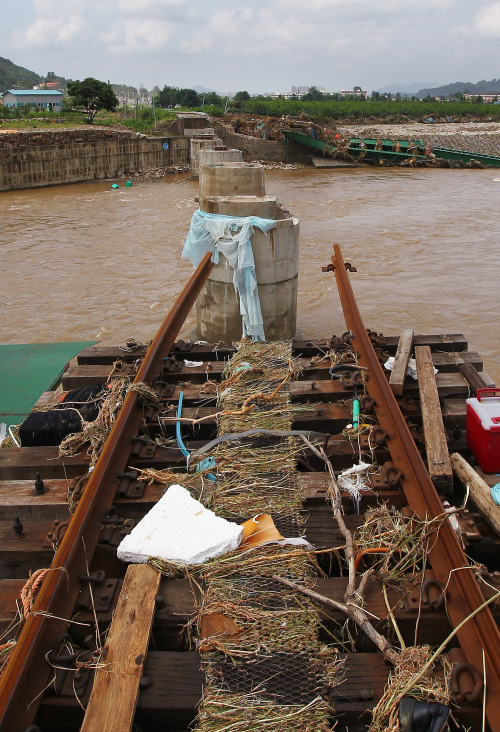The Ministry of Land, Transport and Maritime Affairs on Friday announced a set of guidelines calling for provincial administrations to accept the reality of climate change and upgrade anti-disaster measures accordingly.
Experts say that weather on the Korean peninsula has turned subtropical due to global warming and climate changes.
Experts say that weather on the Korean peninsula has turned subtropical due to global warming and climate changes.

The guidelines are focused on the improvement of water drainage and embankments across the country, among others measures.
The ministry will strengthen assessment of environmental impact from development projects in the planning stage.
“We will put the brakes on reckless development projects on mountains and hills,” said Yoo Byeong-kwon, a ministry official. “Mountains and hills should be kept as a kind of wall to ward off possible landslides and other disasters.”
The plan came two days after more than 700 milliliters of rainfall caused a deadly landslide at Mount Umyeon in southern Seoul, which claimed 16 lives and sparked criticism of the government over its anti-disaster preparations. An ecological theme park was under construction on the mountain. The mountain has fewer trees than other mountains, and a minor landslide took place last summer, too.
“Excessive digging and construction works in recent days to build the park have destroyed trees and weakened the soil ground,” Prof. Park Chang-geun of Kwangdong University said.
However, fearful that the news would cause the real estate price of the area to plummet, local residents looked the other way from the problematic park construction. The local administration, Seocho District Office, has reportedly been hesitant in its recovery and prevention of further disaster after the first landslide.
Other landslides that occurred across the nation including one in Chuncheon, Gangwon Province, also indicate that prevention measures need to be refined and upgraded, the ministry stated.
“The local administrations will be required to beef up measures to prevent natural disasters on both private and public properties,” a ministry official said.
The Korea Meteorological Administration also has come under fire for inaccurate weather forecasts.
Though the nation received 700 millimeters of rain this week, the agency had made a humble forecast of 50 to 150 milliliters, assuring commuters of traffic as usual in Seoul and its adjacent regions on Wednesday and Thursday. But heavy rains flooded many sections of main roads, causing traffic confusion and damaging countless cars.
“It was one of the most face-saving forecasts because the report gave impression that the rain will be not as damaging as it was,” a citizen said.
“Precipitation differed depending on locations. In Jongno of central Seoul, we had over 400 milliliters of rain but in Gimpo, on outskirts of the city, we had 200 milliliters. In these cases, the most accurate report in general will be more than 150 milliliters,” a KMA spokesman said. “Weather forecasting is human work, and the weather is always volatile. We cannot make a 100 percent accurate report on nature,” he said.
By Bae Ji-sook (baejisook@heraldcorp.com)








![[Kim Seong-kon] Democracy and the future of South Korea](http://res.heraldm.com/phpwas/restmb_idxmake.php?idx=644&simg=/content/image/2024/04/16/20240416050802_0.jpg&u=)







![[KH Explains] Hyundai's full hybrid edge to pay off amid slow transition to pure EVs](http://res.heraldm.com/phpwas/restmb_idxmake.php?idx=652&simg=/content/image/2024/04/18/20240418050645_0.jpg&u=20240418181020)

![[Today’s K-pop] Zico drops snippet of collaboration with Jennie](http://res.heraldm.com/phpwas/restmb_idxmake.php?idx=642&simg=/content/image/2024/04/18/20240418050702_0.jpg&u=)